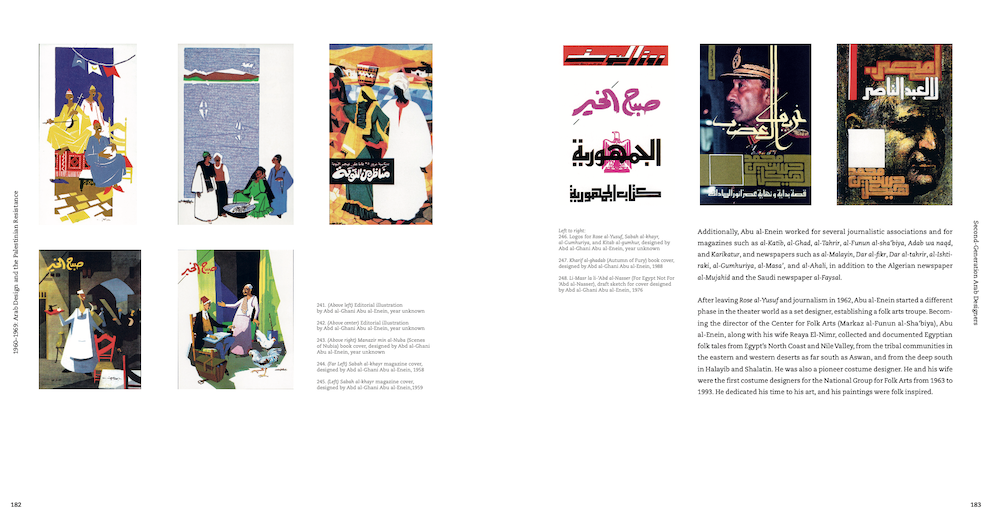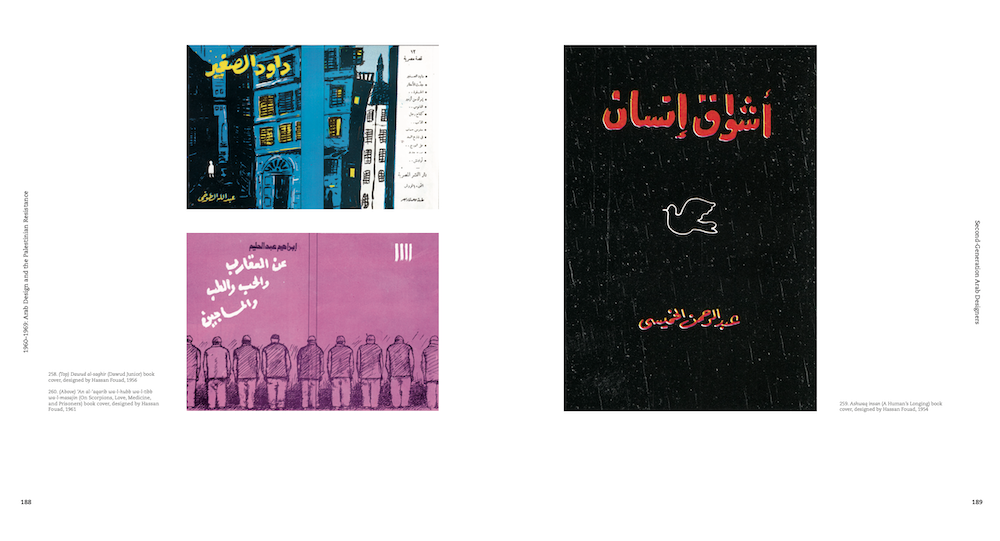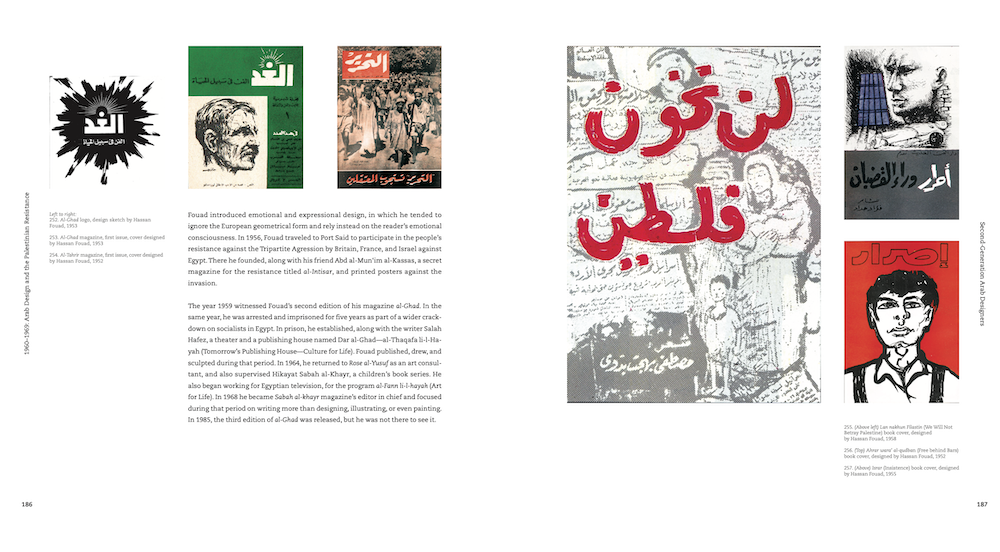Islamic art and architecture has gotten recognition and acknowledgment worldwide, but when it comes to Arab Art and Graphic Design as a whole, so little has been written to document the history.
That’s where Bahia Shehab and Haytham Nawar come in; they are the graphic design professors and researchers that decided to write the first book about the History of Arab Graphic Design.
Shehab, professor of the practice of design and founder of the graphic design program at The American University in Cairo (AUC), decided to write the book with Nawar when she realized there are no books on the history of Arab graphic design that collectively speak about the field.
“There are books on, for example, specific topics; posters in Lebanon, Helmy El Tony as a designer, different designers with the Khatt books, but not a book that talks about the history of Arab graphic design over a long period of history, which is 100 years and spans over a big geography from Morocco to Iraq,” Shehab told Egyptian Streets.

For a very long time, Shehab had been feeling the need for a textbook of the kind to be created; this was that book.
Nawar is an associate professor and the Chair of the Department of the Arts at AUC. He is a practicing artist and designer and a scholar in the fields of art and design, with a focus on design history and practices with a focus on the Arab World and Africa.
“During my stay in Hong Kong, I was teaching the history of graphic design while my colleague was teaching the Asian history of graphic design. This is one of the instances that confirmed that the history of graphic design is taught from a Eurocentric perspective, and this reinforced the urgency to write our Arab graphic design history,” Nawar said.
Shehab and Nawar started working on the book in 2016, and it took them around two years to finish their research before eventually writing it. To Shehab, though, she has been working on the book since 2010 when she first wrote a course teaching the same content as part of the curriculum she developed for the graphic design program at AUC in 2011.
“Bahia and I discussed our shared interests and decided to co-author a book to be taught within our curriculum at AUC’s graphic design program. Then, we applied for a research grant to be able to travel and conduct field research,” Nawar said.

The pair say that the book was written as a historical visual reference for students, artists, and professionals, aiming to rewrite the history of design in Egypt and the Arab World and show their students the importance and richness of our cultural heritage.
For a very long time, Shehab had been feeling the need for this book to be created.
“My target for this book is young Arab designers primarily, and then design educators around the world who are interested in learning more about design that is not western-centric, or eurocentric,” she added.
Shehab and Nawar traveled to many places around the Arab World and beyond to conduct their research, conducting interviews and looking into archives.
“We looked for names in the archives, and then we tried to contact any family members that are still alive to ask them if they have any original work. There was also the documentation process, which included recording and transcribing the interviews, scanning and photographing the found material. We also needed to verify the names such as art schools, etc,” Nawar said.
In addition to fieldwork in Cairo, Nawar and Shehab went to Morocco, Amman and Beirut together on research trips, and independently, Nawar went to London and Shehab went to Damascus, and to Paris to meet designers in the diaspora.
“Because of the political conditions in the Arab world, some of the best designers are also living in the West,” Shehab said.
While Nawar and Shehab are scholarly researchers and professors, they were both surprised at some of the information they learned about Arab Graphic Design history, which they discovered spanned for more than 100 years.
“I found that we have a beautiful, long, rich history of visual culture that nobody knows about. Inside of me, I knew that this existed but to have the proof in your hand in the form of a book is an amazing feeling for me. It’s like meeting your grandparents or your grandmothers,” Shehab told Egyptian Streets.
The discovery of 100 years of Arab graphic design wasn’t in itself surprising, Nawar added, but what was actually surprising was that there is a pattern among Arab designers that undermines the field of graphic design and looks at it from a solely commercial point of view rather than from a cultural and artistic perspective too.
In addition, all the countries they researched did not have proper archives of their design history, which made Nawar and Shehab’s task harder.

Throughout the 100 years, the book tackles topics over a variety of stylistic and political significance, both organizing chronologically and according to regions.
“The book starts with a focus on Islamic art and linking Islamic visual culture to Arab graphic design..then we start with different developments in the field of design that are related to technology..and after that all the political movements that were affiliated, and that pushed design forward,” Shehab said.
The book covers topics from Arab Magazines and Newspapers, Design for Cinema, the relation of Arab Design with the Palestinian Resistance, the Lebanese Civil War, and Diasporic Arab design among others.
“Of course, we relate many of the designs to political events because they influence each other. We also highlight designers from many generations: there were graphic designers before graphic design,” Nawar said.
It also discusses early Arabic advertising and how it started the foundation of art and design schools in the Arab world, then it shows the formation of Arab magazines and newspapers and how technology helped design for the masses.
“This book confirms that we come from a tree of thinkers and designers who have been facing the same problems we are facing and dealing with the same issues that we are dealing with. Looking at their solutions and the way they solve these problems is inspiring and reassuring at the same time,” Shehab said.
The authors hope that the book has a positive impact on the lack of awareness of Arabs’ cultural history, as well as the importance of archiving.
“This should open the doors to other research and facilitate the process of our colleagues and ourselves..People need to see how design is connected to the community and how it relates to everyday life. Hopefully, scholars will be encouraged to write more about design and educate the public about it,” Nawar said.
The book is published through AUC Press, but the pair intend to translate and publish in Arabic and possibly other languages for future plans.
“Their (AUC Press) mission aligns with our book’s focus since they strive to accurately reflect Egypt, the Arab world, and the Middle East to an international audience,” Nawar said.
The pair both believe that there is still a lot to cover in the field. Nawar and Shehab consider themselves very active researchers, and they are both planning different projects and publications coming from them around the topic.
“This is only the tip of the iceberg. We are hoping that there will be an army of historians and scholars who will take all the topics that we touched on and start developing more publications,” Shehab said.
The book is expected to come out in November 2020, and will be available in Egypt through AUC Press and worldwide on Amazon.







Comments (3)
[…] Release Radar: The First Ever Book on Arab Graphic Design History […]
[…] Release Radar: The First Ever Book on Arab Graphic Design History […]